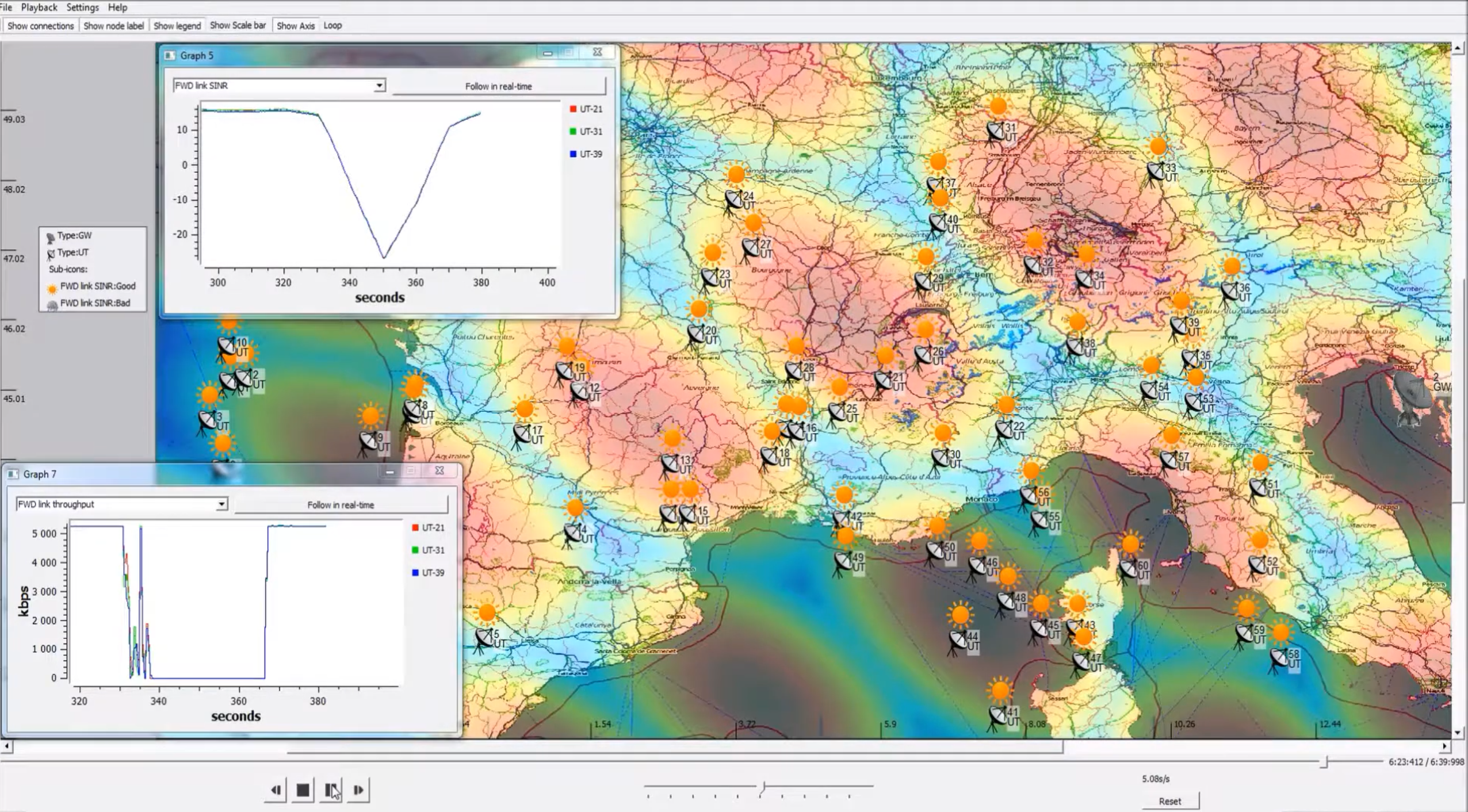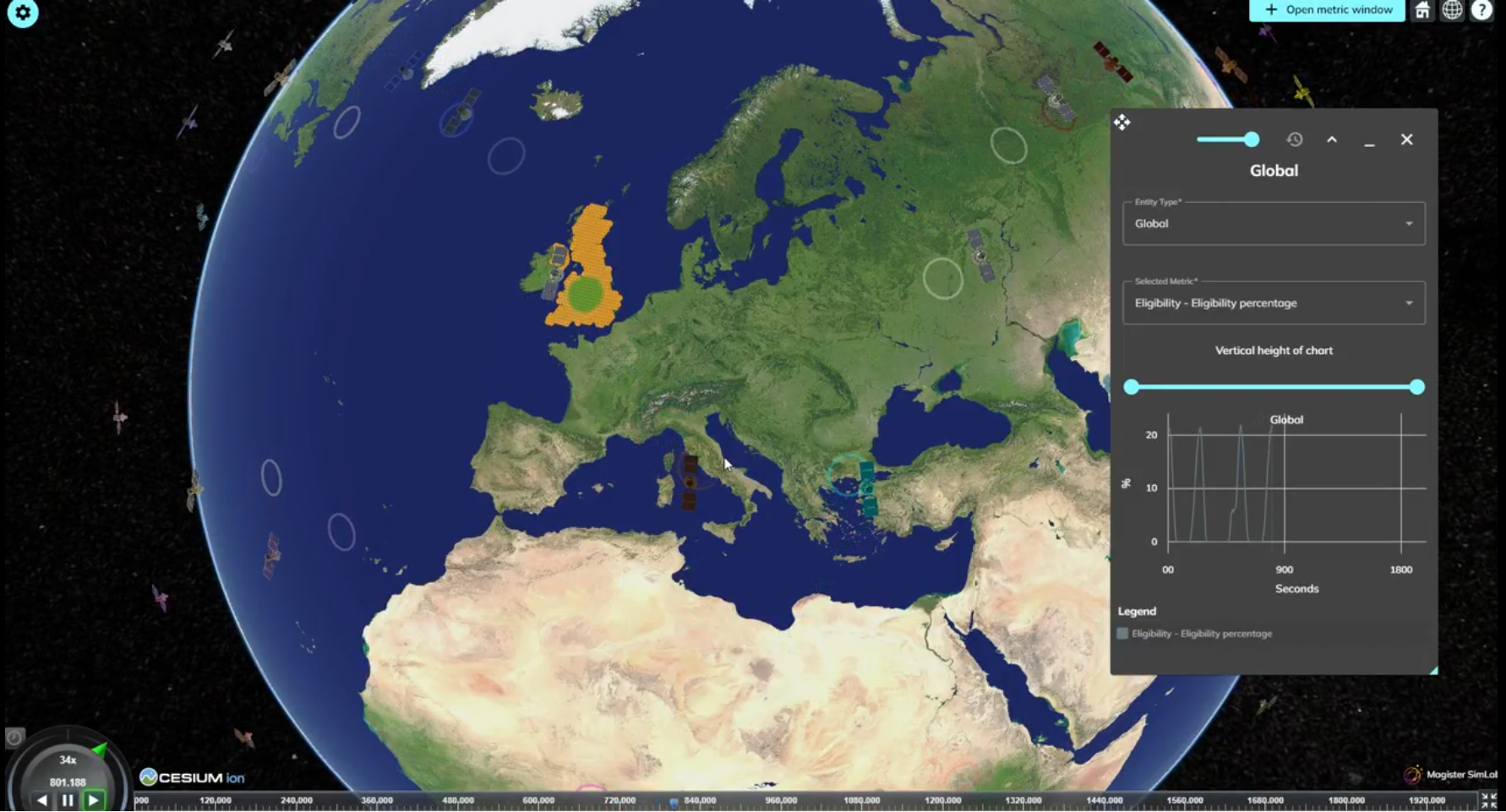20 years of Magister Solutions – Pioneering simulations in telecom, SatCom and space
May 5, 2025
May 5, 2025
This year, we’re celebrating a significant milestone as Magister Solutions reaches 20 years in business.
We’re excited to mark this anniversary in November – and we’re grateful to everyone who has been part of our story so far: our team members past and present, our customers, and our partners.
As we look back, this feels like an ideal time to reflect on our journey so far. Over the years, we’ve worked alongside the world’s leading companies in telecom, SatCom, R&D and space. Through it all, one constant has been at the heart of what we do: simulation.
But how did all this begin? What kind of projects and stories have defined our journey? And who are the people behind it all? Let’s take a closer look.
Magister Solutions was established from a collaboration between Nokia and the University of Jyväskylä (JYU). At the beginning of the 2000s, Timo Hämäläinen, a professor at the department of Mathematical Information Technology at JYU met another Hämäläinen, Seppo, who worked at Nokia Research Center.
The two of them started discussing their work, particularly their shared interest in telecommunication simulators. This conversation sparked the idea of a collaboration between JYU and Nokia on system simulators.
As the collaboration project started, Timo handed over the handling of the project to fellow professor, Tapani Ristaniemi. At first, the project employed two students. They started to develop a 3G WCDMA/HSDPA simulator and conducted research for Nokia to be used in 3GPP standardization while finishing their studies.
After a few years, it was determined that it would be best to continue the project as a private company. Magister Solutions was founded officially in November 2005. Tapani Ristaniemi was selected as the CEO of the company.
The first employees of the company were Janne Kurjenniemi and Timo Nihtilä. Janne later served as the CEO of Magister from 2008 to 2019. Timo Nihtilä is still part of the company today, currently working as a Principal Scientist in wireless system simulator software design and implementation.
 NEF player demo of mobile network simulations
NEF player demo of mobile network simulations
The Nokia project continued until 2020. Magister worked on 3.5G, 4G, 5G and WiFi simulators for Nokia’s standardization work and internal R&D. Through this project, Magisterians got acquainted with technologies such as LTE self-optimizing networks (SON), LTE licensed assisted access (LAA), WiFi IEEE 802.11 ac/ad/ay, and NR-U (New Radio Unlicensed).
While still working on the Nokia project, we branched out into new endeavours. We conducted simulator work for various telecommunication and R&D customers, and started participating in international EU, CELTIC-NEXT and European Space Agency projects.
The establishment and founding of Secapp
 NEF player demo of a SNS3 simulator scenario
NEF player demo of a SNS3 simulator scenario
Our first project with the European Space Agency started in 2013, when we started developing a satellite network simulator (SNS3) to be used by industrial and academic organizations in future ESA activities.
Through ESA projects, we expanded our focus to satellite communications. As the SatCom industry began adopting solutions originally developed for the mobile sector, we were well-positioned to apply the expertise we had built up over the years.
Backed by ESA funding, we also embarked on the development of our own in-house simulation and visualization platform, Magister SimLab.
→ Did you know? The first version of Magister SimLab was called CloudSim, which was developed during the WIVE project.
In 2021 we joined the 3GPP – the global standards organization for mobile communication. At this time, we were already involved in 3GPP-related standardization projects, such as ALIX and DYNASAT.
Through the 3GPP membership, we’re able to shape the future of the SatCom industry and standards for 5G TN/NTN and beyond.
Alongside customer and project work, we’ve consistently conducted our own research and encouraged our employees to pursue academic studies, publish their findings, and present at international conferences.
We have received Best Paper awards for many of our publications – the most recent being for the paper “Simulative Comparison of DVB-S2X/RCS2 and 3GPP 5G NR NTN Technologies in a Geostationary Satellite Scenario”, presented at ASMS/SPSC 2025.
 The C-DReAM simulator displaying what SAR satellites observe in their orbits
The C-DReAM simulator displaying what SAR satellites observe in their orbits
At Magister Solutions, we are excited about the rise of New Space – and the role our simulators play in helping customers design more accurate space and satellite systems.
Today we support space and space technology companies, for example, in designing satellite constellations for communication and Earth observation. While our roots are in terrestrial and satellite network simulations, we’re constantly expanding our expertise to support a wider range of space applications.
One area of focus is enhancing our tools for new use cases – such as satellite coverage, geospatial, thermal and radiation analyses. These advancements are helping us model more complex scenarios, better supporting the development of next-generation satellite and space systems.
As we look to the future, who knows what parts of the solar system our simulators will be able to explore in the coming years?
SCNE, C-DReAM, DASCE, 4SSTB projects: Supporting the optimization of future NGSO/LEO satellite systems through simulations: resource management, inter-satellite link routing, terrestrial and non-terrestrial network coexistence, enhanced mobility support, etc. (2018 →)
ALIX, MARINA, HELENA, 5G-SPECTRA, 5G-EMERGE, NEXASPHERE projects: Providing simulation support for 3GPP technology standardization and influencing future standards for 5G TN/NTN and 5G-Advanced. (2018 →)
EMPhAtiC project: Evaluating and demonstrating the capability of enhanced multicarrier techniques to make better use of the existing radio frequency bands in providing broadband data services in coexistence with narrowband legacy services. (2012 – 2015)
DYNASAT project: Researching, developing and demonstrating innovative techniques for bandwidth-efficient transmission and efficient spectrum usage. Assessing how these new techniques can be designed for satellite architectures and improve the performance of satellite network infrastructures, fully integrated in the 5G ecosystem. (2020 – 2023)
SHARING project: Stimulating 4G evolution towards 5G mobile networks by developing innovative technologies designed to improve network performance and user experience (2012 – 2015)
COMMUNE project: Developing system level tools and simulations to verify methods for automatically managing and optimizing cognitive networks (2011 – 2013)
Developing new wireless technologies, link/system level/static/quasi-static & dynamic simulations, proof-of-concept, and standardization work.
Designing and implementing the Self-Organizing Simulator 3 (SonS3) in a joint project with Elisa, a major Finnish network operator. SonS3 makes use of real network data to enable an accurate performance analysis of mobility related SON use cases.